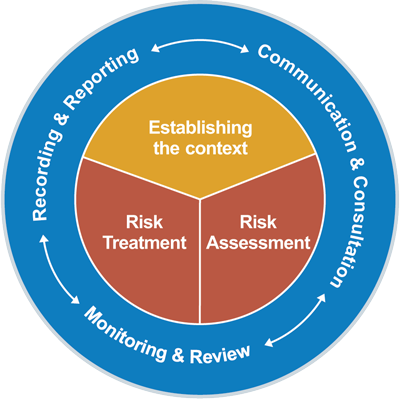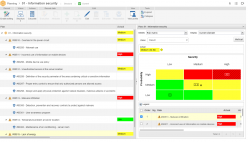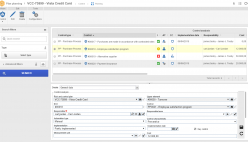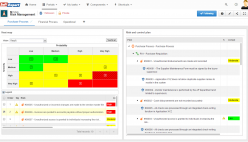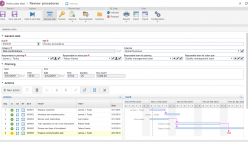ISO 31000
El Reto
La norma ISO 31000 ofrece orientaciones genéricas para la gestión de los riesgos. La ISO 31000 determina principios, una framework de trabajo y un proceso para la gestión de los diversos tipos de riesgos, en todas las organizaciones, independientemente de su porte. La norma no obliga a utilizar un abordaje único y rígido, sino que enfatiza la aplicación de los principios e instrucciones dentro de la estructura y las necesidades específicas de la organización.
Las organizaciones de todos los tipos y tamaños están enfrentando una serie de riesgos que pueden afectar el alcance de sus objetivos. Todas las actividades de una organización poseen riesgos. Las directrices de la ISO 31000 promueven la integración de la gestión de riesgos con todas las actividades de la organización, incluyendo estrategia y planificación, resiliencia de negocios, TI, gobernanza corporativa, gestión de personas, conformidad, salud y seguridad, continuidad de negocios, gestión de crisis y seguridad.
ISO 31000 Solution
SoftExpert ofrece la solución de software más amplia y avanzada para la gestión de riesgos corporativos, atendiendo las necesidades de los más rigurosos reglamentos globales. El SoftExpert Excellence Suite ayuda a las empresas a adherir a la norma ISO 31000, reduciendo los costos de conformidad, maximizando el éxito, aumentando la productividad y reduciendo los riesgos.
La solución de SoftExpert permite que las organizaciones atiendan los requisitos de la ISO 31000 de forma fácil, auxiliando en la gestión de riesgos, controles, planes de acción, y también de capacitaciones, no conformidades, indicadores de desempeño, procesos, entre otros, impulsando la eficiencia organizacional, estableciendo una terminología común, así como también estandarizando las mejores prácticas y frameworks. Con recursos de colaboración en línea, la organización y sus gestores pueden comunicar y ser actualizados sobre las iniciativas de conformidad, involucrando a más usuarios, equipos, oficinas y unidades de negocio a través de un abordaje sistemático y unificado para obtener la excelencia em la gestión de riesgos.
Screenshots
Principales Beneficios
Simplify risk management implementation.
Incentiva la gestión proactiva en lugar de la reactiva.
Refuerza la necesidad de identificar y tratar los riesgos en toda la organización.
Optimiza la identificación de oportunidades y amenazas.
Cumple con los requisitos legales y reglamentarios y con las normas internacionales
Perfecciona los informes financieros.
Perfecciona el gobierno corporativo.
Mejora la confianza de las partes interessadas.
Establece una base confiable para el planeamiento y la toma de decisiones.
Mejora los controles.
Asigna y utiliza los recursos para el tratamiento de los riesgos de manera eficaz.
Mejora la efectividad y la eficiencia operativa.
Optimiza la gestión de incidentes y la prevención.
Minimiza las perdidas.
